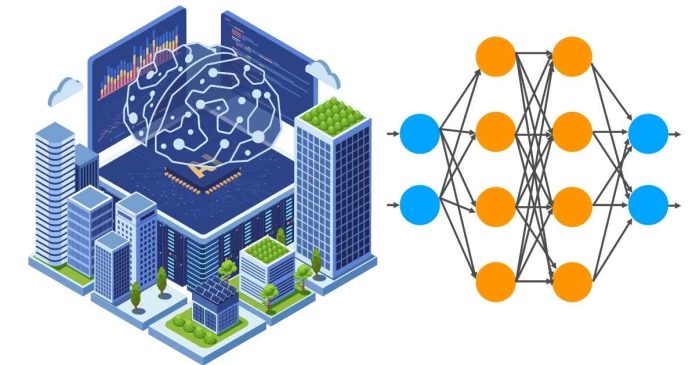Backpropagation is a fundamental algorithm used to train deep neural networks. It is a method for updating the weights of the network to minimize the error (or loss) in predictions. The backpropagation process consists of two main phases: the forward pass and the backward pass. Here’s a breakdown of each phase:
1. Forward Pass
In this phase, the input data is passed through the network, layer by layer, to compute the output (prediction). Here’s how it works:
- The input is fed into the input layer of the neural network.
- The input is then processed layer by layer, passing through hidden layers (if any), where weighted sums of the inputs are computed, followed by the application of an activation function (e.g., ReLU, sigmoid, tanh).
- The final output layer computes the network’s prediction based on the weighted sums of the previous layer’s outputs.
After the forward pass, the network’s output is compared to the true target (ground truth) to calculate the error or loss. A common loss function is the Mean Squared Error (MSE) or Cross-Entropy loss, depending on the problem type (regression or classification).
2. Backward Pass (Backpropagation)
The backward pass is where the actual “learning” takes place. The goal is to minimize the loss by adjusting the weights of the network. Here’s how the backpropagation works:
a. Compute Gradients of the Loss Function
The gradient of the loss function with respect to each weight is computed using the chain rule of calculus. This is done in the following steps:
- Start with the output layer: Calculate the derivative of the loss with respect to the output.
- Propagate this error backwards through the network: For each layer, compute the gradient of the loss with respect to the weights and biases of that layer.
This step involves calculating the partial derivative of the loss function for each weight and bias, which tells us how much a change in each weight will impact the overall error.
b. Update Weights and Biases
Once the gradients are computed, the weights and biases are updated using an optimization algorithm like Stochastic Gradient Descent (SGD) or more advanced methods like Adam. The weights are adjusted in the direction that minimizes the loss:
- Weight Update Rule:
w=w−η⋅∂L∂ww = w – \eta \cdot \frac{\partial L}{\partial w}where:
- ww is the weight,
- η\eta is the learning rate (a hyperparameter that controls the step size),
- ∂L∂w\frac{\partial L}{\partial w} is the gradient of the loss with respect to the weight ww.
- Bias Update Rule: Similarly, biases are updated using the gradients calculated for them.
Key Concepts:
- Gradient Descent: An optimization method to minimize the loss by adjusting weights iteratively in the direction of the negative gradient.
- Learning Rate: A hyperparameter that determines the size of the steps taken in the gradient descent process.
- Chain Rule: A fundamental rule in calculus used to compute the gradients efficiently for each layer in the network.
Summary:
Backpropagation is essential for training deep neural networks because it allows the network to adjust its internal parameters (weights and biases) based on the errors made during the prediction phase. Through repeated forward and backward passes (iterations), the network gradually learns to improve its predictions, eventually converging to an optimal or near-optimal set of weights.


